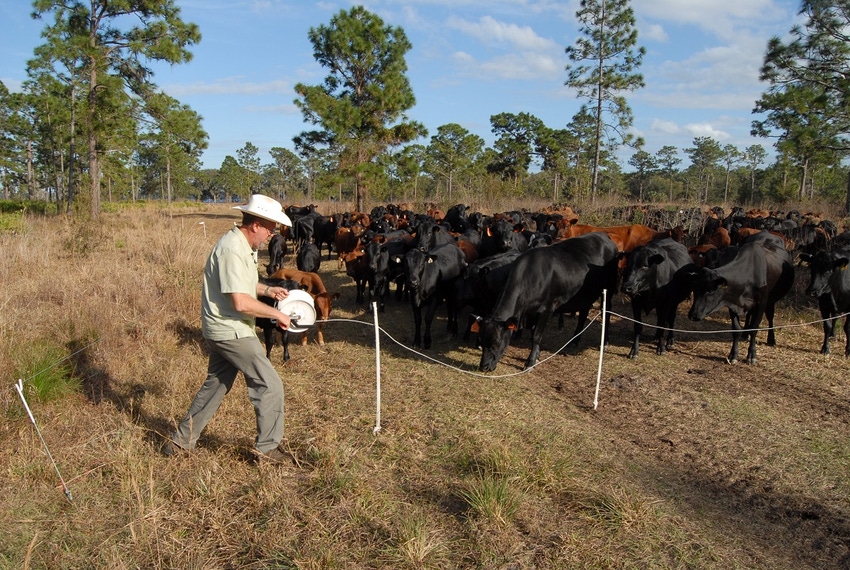
In response to the destruction seen in the "dust bowl" days of the 1930s and again in the 1950s, the sustainable agriculture movement was founded.
The concept was to develop and use land management practices and techniques that would preserve and protect our natural resources of soil, water, and plant life. The movement was successful to the extent that it raised national awareness to the danger of soil erosion by wind and water and triggered new interest in conserving natural resources.
The early proponents of the sustainable agriculture movement, both academics and producers, demonstrated that techniques with long histories of successful use – rotating crop land with grazed forage crops, cover crops, and use of multiple crops both plant and animal – could be both ecologically sound and profitable.
Real progress was made in correcting some of the worst abuses. For example, practices such as using "dust mulches" to supposedly reduce evaporation of soil moisture and burning off crop residue to make cultivation easier were exposed as counter-indicated. Programs were initiated to plant shelter belts to reduce wind erosion, and terraces were installed on sloping, cultivated ground.
While these practices did reduce soil erosion, they did little to address the root problem of soil degradation – the loss of soil organic matter and loss of soil life caused by years of tillage and heavy use of fertilizers toxic to soil life. Common practices such as fall plowing to allow freezes to mellow the soil and repeated disking to keep weeds down reduced soil organic matter and destroyed soil life. Practices widely recommended as remedies for compacted soil and low water holding capacity – subsoil ripping, clean till summer fallow, and deep plowing – were shown to actually made the situation worse.
To review a bit of history, American agriculture was making advancement when World War II turned the world upside down. Conservation was more or less forgotten in the rush to supply food and fiber to the war effort. When the war ended, agriculture was changed dramatically by the availability of cheap nitrogen fertilizer, mechanization, and chemical pesticides. The definitions of good agricultural practices and policy were reversed almost overnight.
The situation reached critical mass when most farm animals were moved from the land to confinement and most crop ground was continuously cultivated in cash crops.
With great fanfare, the Green Revolution – the ad agency title for the industrialization of agriculture – was touted as the answer to the feeding and clothing of a rapidly expanding world population. Initial results were little short of amazing; production of agricultural commodities of all sorts increased greatly and it appeared that mankind had finally conquered famine. The biggest problem of the new program was low prices due to high production.
Fast forward 60 years and the picture has changed dramatically. Production has remained high, even increased to new highs, but at tremendous cost. All over the world the ecological processes that control growing conditions – water cycle, mineral cycling, energy flow and biological succession –are degraded. Increasing rates of desertification are problems on all continents except Antarctica and the Arctic. Floods caused by soil being unable to take in water and droughts and soil being unable to retain water are both more common. In some areas ground water is contaminated with agricultural chemicals to the point it is toxic. These same chemicals have created a huge area in the Gulf of Mexico where life cannot exist. Entire classes of animals: insects, amphibians, birds, mammals are disappearing due to toxins and to habitat loss.
It is obvious that mainstream conventional agriculture is not sustainable. It is a mining process that cannot continue long term. Put another way, sustainability is not enough.
Not all is doom and gloom. A radical change with a different name is starting to spread across the land. Individual farmers and ranchers are realizing that sustainability is not enough. Our resources – soil, water, and biodiversity – are degraded to the point that we can no longer afford to rely on technology to allow us to limp around the damage.
It is past time that regenerative agriculture become standard operating procedure. It is agriculture that not only sustains but actually regenerates resources. There are people all over the world practicing this type agriculture that improves rather than destroys. These people are showing that agriculture can be productive, profitable, people friendly, and ecologically sound.
The science is straight forward; promote the wellbeing of all parts of the soil-plant-animal-wealth-human complex that we call a farm or ranch. Change from a culture of death – killing off competition – to one increasing life by promoting mutually beneficial relationships.
About the Author(s)
You May Also Like




